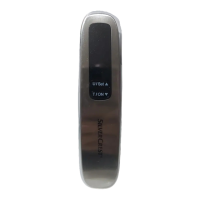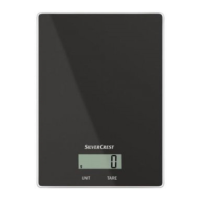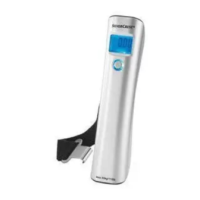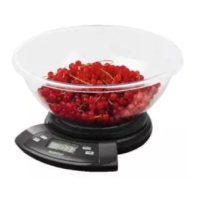34 GB/MT
Operation / Troubleshooting / Cleaning and Care / Disposal
When removing all items being weighed, the
scales will display a negative value.
Briefly press the ON / OFF button / TARE but-
ton
3
. The LC display will read “0“ (0.00 or
0: 0.0).
Switching off the scales (Fig. C)
To save power, the kitchen scales
1
will automati-
cally switch off after approx. 120 seconds of inac-
tivity.
To manually switch off the kitchen scales
1
,
press and hold the ON / OFF button / TARE
button
3
for approx. 2–3 seconds.
Troubleshooting (Fig. D)
= Error
= Cause
= Solution
The LC display
2
reads “EEEE“.
The maximum weight of 5 kg / 11lb 0.36 oz of
the kitchen scales
1
was exceeded.
Remove the items you are trying to weigh from
the kitchen scales
1
.
Reduce the item you are trying to weigh, and
weigh in several batches.
The LC display
2
reads “ “.
The battery
5
is almost drained.
Replace the battery
5
according to the chapter
“Changing the battery“ soon.
The LC display
2
reads “Lo“.
The battery
5
is drained.
Replace the battery
5
per section “Changing
the battery“.
The kitchen scales
1
won‘t switch on.
The battery
5
may be drained.
Replace the battery
5
per section “Changing
the battery“.
If the kitchen scales
1
still won‘t switch on,
please contact our Service Hotline.
The LC display
2
reads “unSE“.
The scale is not positioned level / steady.
Place the scale on a level surface (also see Fig. A
).
Cleaning and Care
Do not use chemicals, abrasives or sharp
objects for cleaning. The kitchen scales may
otherwise be damaged.
Never immerse the kitchen scales in water or
other liquids. The kitchen scales may otherwise
be damaged.
Clean the kitchen scales using a slightly damp-
ened, lint-free cloth. For more stubborn dirt you
can also apply a weak soap solution to the cl
oth.
Disposal
The packaging is made entirely of recyclable mate-
rials, which you may dispose of at local recycling
facilities.
b
a
Observe the marking of the packaging
materials for waste separation, which
are marked with abbreviations (a) and
numbers (b) with following meaning:
1–7: plastics / 20–22: paper and fibre-
board / 80–98: composite materials.
Contact your local refuse disposal
authority for more details of how to
dispose of your worn-out product.
To help protect the environment, please
dispose of the product properly when it
has reached the end of its useful life and
not in the household waste. Information
on collection points and their opening
hours can be obtained from your local
authority.
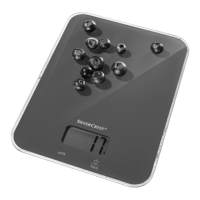
